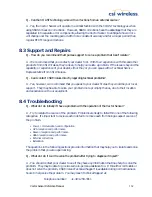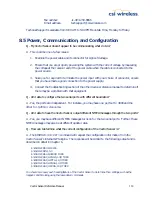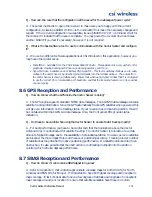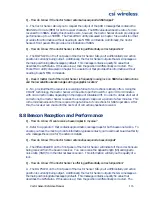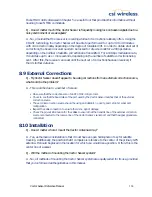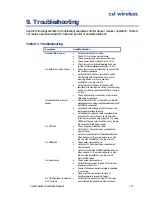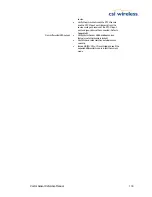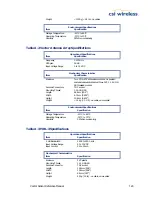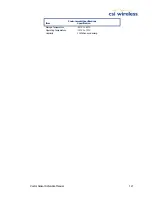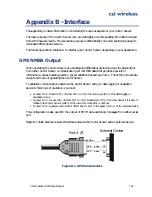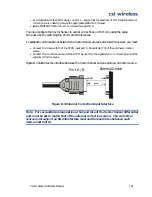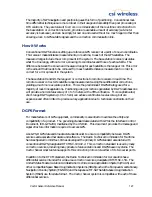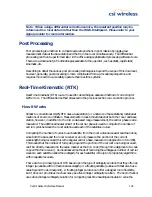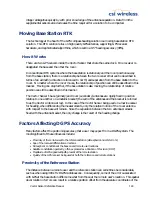
Vector Sensor Reference Manual
114
Q - How can I be sure that the configuration will be saved for the subsequent power cycle?
A - The surest method is to query the receiver to make sure you’re happy with the current
configuration, by issuing a $JSHOW<CR><LF> command (if not make the necessary changes and
repeat). If the current configuration is acceptable, issue a $JSAVE<CR><LF> command. Wait for
the receiver to indicate that the save is complete. You may power the receiver down and issue
another $JSAVE if you feel it’s necessary, however, it is not required.
Q - What is the best software tool to use to communicate with the Vector Sensor and configure
it?
A - We use two different software applications at CSI Wireless for this application, however you
may have other preferences.
•
PocketMAX - Available from the CSI Wireless Satloc Web site. This application is a very useful tool for
graphically viewing tracking performance, positioning accuracy, and more.
•
HyperTerminal - Available on all Windows 95, 98, and ME. This tool is useful as it allows you to easily
configure the Vector Sensor by directly typing commands into the terminal window. The output from
the Vector Sensor is shown simultaneously. Ensure that when using HyperTerminal that it is configured
to use the correct PC communication port, baud rate, and that the local echo feature is on (to see what
you are typing).
8.6
GPS Reception and Performance
Q - How do I know what the GPS inside the Vector Sensor is doing?
A - The GPS engine supports standard NMEA data
messages. The $GPGSV data message contains
satellite tracking information. Since the GPS automatically tracks GPS satellites when powered, this
will give you information on the tracking status. If your receiver has computed a position, this will
be contained within the $GPGGA data message. Also, the front panel LEDs provide status
indication.
Q - Do I have to be careful when using the Vector Sensor to ensure that it tracks properly?
A - For best performance, you have to be careful such that the hemisphere above the Vector
Antenna Array is unobstructed for satellite tracking. The Vector Sensor is tolerable of a certain
amount of signal blockage due to the availability of redundant satellites. However, as more satellites
are blocked, the more impact this could have your positioning accuracy. Tracking a lower number
of satellites has the potential to reduce positioning performance. If a satellite is blocked due to an
obstruction, it’s also possible that the obstruction is contributing multipath into the position
solution, which will also degrade performance.
8.7
SBAS Reception and Performance
Q - How do I know if I can receive a SBAS signal in my area?
A - Refer to Appendix C that contains approximate coverage maps for both WAAS (for North
America) and EGNOS (for Europe). It’s important to have both signal coverage and ionospheric
map coverage. In fact, it’s desirable to have a few degrees of latitude and longitude of ionospheric
map coverage around your location to ensure that satellites available have these correctors.













